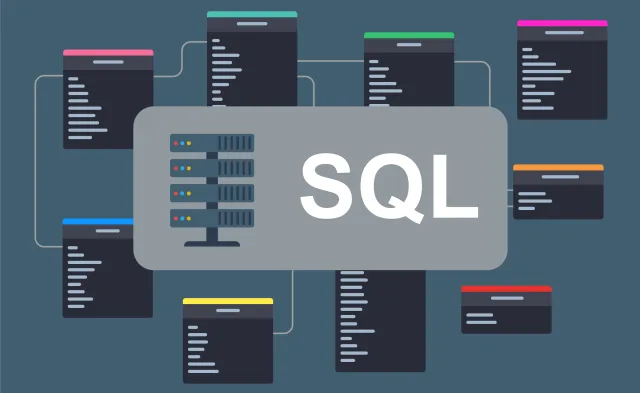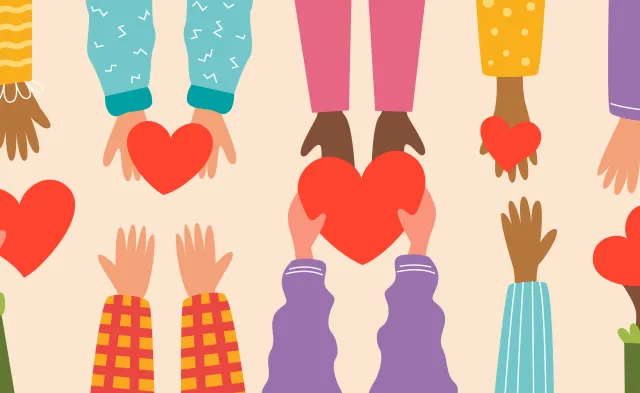Latest
Semiotics and Cultural Competence
Jul 14, 2021

Our actions and thoughts are often governed by a complex set of culture convention messaging that allow us to interpret them instinctively and instantly.
Simplified, think of a traffic light. When the lights are red, it communicates to us that we should stop, and once green, we could proceed. When we see these colors, we automatically know how to react to them. Likewise, when children play red-light-green-light, they know that the word “red” means to stop and “green” means go. These are signs that have been established by cultural convention over a long time. We now unconsciously associate meaning to those simple colors.
Viewing this sign or set of words, we are enabled to follow the set rules of society or the game.
So, what does a traffic light have in common with cultural competence?
In her latest T.R.U.E. Talk with Terri, “Semiotics and Cultural Competence,” Herzing Associate Vice President of Diversity, Equity and Inclusion Terri Howard focuses on semiotics and its role in cultural competence. She invited James Bennett, the Director of Instructional Design for Herzing University, to shed some light on this question and other cultural issues related to semiotics.
What is semiotics?
Semiotics is the study of signs. A sign can be defined as anything that communicates meaning, whether an activity, conduct or process that is not the sign itself. Broken down a little further, it is the study of signs and symbols as a significant part of communication and understanding.
Think back to the traffic light. It's a way of seeing the world and of understanding how the landscape and culture in which we live has a massive unconscious effect on all of us.
How does this relate to cultural competence?
Since our actions and thoughts are often governed by a complex set of cultural messages and conventions, everyone is unconsciously interpreting the meaning of signs around them. The signs around us can differ from traffic lights to colors of flags, types of cars, the architecture of buildings, the design of packaging and even what we wear.
How we look at simple items or the world around us differs from person to person. This is because we all have different backgrounds that frame how we interpret signs.
Terri Howard provided the example of sagging pants in her video. If you're not familiar, sagging is a manner of wearing pants that sag so that the top of the pants is significantly below the waist.
Sagging has been traced to slavery and a graphic process called “breaking the buck”. Another historical reference point of sagging comes from the American prison system. Inmates were not allowed to wear belts or shoestrings since they could be used as potential weapons or used to commit suicide so their pants would sag. It’s for this reason that sagging has a very negative connotation for many people. However, that is not the case for everyone.
Sagging became a fashion trend associated with the skater and hip-hop movement. Many young people don't necessarily know the historical references and connotations of that fashion statement. Some people like to wear their pants low because they think they are emulating other people that they think highly of, or they may just feel comfortable.
What is the intersection between signs, symbols and culture?
“Everything that humans do that has to do with memory comes down to signs and symbols. We speak in symbols which are words or even just making sounds,” stated James Bennett. “You know how things like crying say something to us.”
But crying does not mean the same thing for everyone. For some people crying is just an external display of sadness, but people can also cry tears from joy or laughing too hard. Other people may see tears as a sign of weakness or physical injury.
Another example is if you see smoke on the horizon. When you see smoke, you’d assume right away that that's possibly a fire. You interpret that sign or that symbol as information. The same thing happens with culture and what we identify as a culture.
“How we dress, what we think are acceptable behaviors and unacceptable behaviors are all part of these sorts of signs and symbols. Something as simple as a handshake or withdrawing for a handshake has meaning behind it. We unknowingly acknowledge these situations” Bennett explained in the video.
How do those signs and symbols get misinterpreted?
There are many different cultural subsets, which can cause some things to be misinterpreted.
For example, consider connotation and denotation. The denotation is the exact definition of a word, essentially what something means. If we say broccoli, it is the label for the green vegetable. However, connotation means an idea or feeling that a word invokes in addition to its literal meaning. Many connotations can come with the word broccoli. Maybe as a kid, you hated broccoli so just hearing the word broccoli makes you ill. Your best friend’s favorite vegetable may be broccoli so for that person it has a positive connotation.
Your culture and your background ultimately determine what kind of connotation a word has. Connotations can evolve as well. Just like people, cultures also will evolve and change.
How can we become more culturally competent and understanding and appreciating the signs and symbols of various groups?
“That is probably the toughest challenge facing our society and facing us as individuals” Bennett commented. “What we have to do is we have to be intellectually honest and recognize that this is the reason that some people argue.”
To build understanding, people need to stop and evaluate what has been said. In many cases, without even being consciously aware, we will misinterpret something. It is important to be aware of signs and symbols and know that they can be interpreted or misinterpreted depending on the individual, situation, or circumstance.
Bennett shared this piece of advice, “If there was one thing I could teach everyone in the world today, it would be to hang on a second and take a deep breath. You may not be interpreting that sign the same way someone else does. You can save yourself a bunch of anxiety personally by just being aware of communication science. You just need to look at Facebook to see what I mean!”
Semiotics is an important tool to ensure that intended meanings are unambiguously understood by the person on the receiving end. Usually, there are good reasons if someone does not understand the real intention of a message and semiotics can help unravel that confusion, ensuring clarity of meaning.
Terri Howard provided an apt conclusion to the video, “The symbols all around us provide a shorthand for understanding but we'll never get to our truths unless we look past those symbols. Looking past those symbols helps us better understand each other and the more we understand each other the more we understand our truths.”
Learn More About Our Career Programs
BLS pay estimates calculate the median annual wage for various occupations. Per the BLS the median wage for an occupation is: "The wage at which half of the workers in the occupation earned more than that amount, and half earned less. Median wage data are from the BLS Occupational Employment and Wage Statistics survey." Bureau of Labor Statistics (BLS), U.S. Department of Labor, Occupational Outlook Handbook 2024. BLS median wage estimates do not represent entry-level wages and/or salaries. Multiple factors, including prior experience, age, geographic market in which you want to work, and degree level and field, will affect career outcomes, including starting salary and earnings as an experienced employee. Herzing neither represents that its graduates will earn the median salaries calculated by BLS for a particular job nor guarantees that graduation from its program will result in a job, promotion, particular wage or salary, or other career growth.
Latest
Recent Blog Posts
Subscribe to our Newsletter
Get the latest news you need to know, from study hacks to interview tips to career advancement. Have it delivered right to your inbox biweekly.








